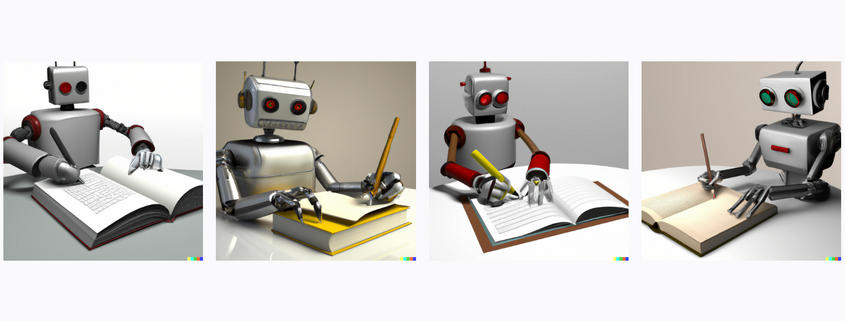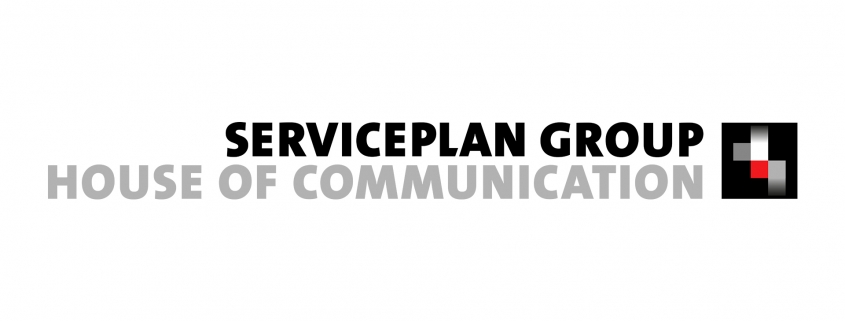Since the beginning of the year, the internet has been rife with tutorials popping up like whack-a-moles. They’re impossible to miss. In the last 6 months, generative artificial intelligence has become the ultimate weapon for all editorial and SEO strategies. And according to sector gurus, these AIs really can do anything: identify promising topics for your websites to showcase, structure your copy so that readers are hooked, and above all, gush endless streams of content.
All that’s left for you to do is stuff your CMS with that machine-spewed copy, and you’ll soon stand out from the crowd with infinite high-value keywords and breath-taking ROI. A miracle solution.
Really? Well, no. Things are little more complex. While generative tools can certainly help deploy a carefully considered editorial strategy, they certainly aren’t a quick fix to any problem. Anything but. Human intelligence and creativity have a bright future for people who want to support real companies with their SEO strategy.
A genius, with room for improvement
Of all the creative intelligent content tools that have made noise on the internet in recent months, ChatGPT undoubtedly has the loudest voice. Initially presented as a conversational interface, it very quickly found its place in the Content Marketing toolbox. At first glance, its setup and the results it generates, are pretty impressive.
Almost every digital professional has had the chance to take ChatGPT for a test drive. It doesn’t just answer questions, the generative platform can even put forward an opinion – provided it remains ethical and follows the rules enacted by its designers – and defend a precise argument on a given subject. It can write content in a predefined form (a recipe, a list of steps, short sentences or precise structures, etc.). It can also handle endless themes in record time. In short, ChatGPT has a wide range and extraordinary agility in how it writes, without the limitations of a human brain.
It wouldn’t be a huge leap to suggest it might soon be replacing copywriters.
So why is it so good at generating content on anything and everything in such a short time? Beyond the technological prowess of the Large Language Model on which ChatGPT is based, the best explanation is the sheer amount of knowledge that has gone into training the tool.Articles, content, text files by the millions covering thousands of subjects and each written in a very particular style have all been fed into it. Artificial intelligence is then able to analyse, dissect and finally reproduce that content and style, even though it does not understand it.
And there’s the rub : AI is above all a formidable… copier.
Unravelling the tangled web of fiction
Here’s where things get dicey . The main risk of using generative artificial intelligence for a marketing strategy is to think that the tools are anything other than very gifted copiers – “stochastic parrots” to quote the American researcher Emily Bender – and to imagine that they really are intelligent. Because none of the AI tools that have arrived on the market in the last few years can really understand what they write.
They are purely rhetorical machines, capable only of making their productions look believable, without worrying about the content they share. There have been more and more demonstrations of this in recent months: various AI testers have found misattributed quotes, incorrect or even totally made-up sources, and sometimes references to authors or scientists who simply never existed. Enough to cast doubt on any machine-produced content.
The reason is that AI can’t identify truth, nor indeed meaning. The tools are mainly designed to assemble words into understandable and believable sentences. They can therefore trick the reader with misleading sources. How can we possibly find out what errors – intentional or otherwise – slipped into the petabytes they were fed during their training?
Above all, they cannot challenge the truth of their production, only its likelihood. So they often invent content whose grammatical structure and meaning is perfectly plausible. But that doesn’t mean it is true. One of the risks of using generative AI today to market your business is that you might publish something completely fake.
The biggest promoters of AI, such as Microsoft and Google, have also begun to warn their users about these drawbacks. Indeed, ChatGPT has a worrying disclaimer under its message bar: “ChatGPT may produce inaccurate information about people, places, or facts”.
When humans use AI
Given that it is impossible to guarantee whether content produced by generative tools is factual, is it then prudent to use artificial intelligence to produce content for your brand, whether simply for SEO purposes or more ambitious goals?
The answer seems clear: the promise of fully automating content production and replacing your team of writers with bots in the coming months is a meaningless threat put forward by a handful of quick-fix sellers.
All the feedback from the writing field that has been shared recently proves that humans still have an important role to play in the digital editorial sphere. For many reasons. First because if what AI writes is unreliable – it generates incorrect information – humans must be involved to verify each statement it makes. Secondly, because even though robots do seem to write with some skill, it is still unlikely that they will be able to master the tone of voice that is specific to your brand, its identity and its imagery. The ability to sculpt your text into something that truly matches your brand identity looks set to remain resolutely human, even with algorithms becoming more and more sophisticated.
Finally, and this is the best reason, because there is currently no artificial intelligence tool that can generate content without being told exactly what to create. While generative models can of course help identify a subject or angle, like a sparring partner or Dr Wilson when he helps Dr House find a diagnosis, they do it because a human person challenges them, requests information, questions them. The revolution that generative artificial intelligence might spark in the world of web writing is the emergence of a new profession: “prompt designer”, a specialist who can ask a machine to produce a text that comes as close as possible to the client’s brief. A specific job, of course. Requiring technical skill, yes. But the person doing that job will always need to understand both the identity of a brand and the communication strategy of a company. They would need to be a communication professional.
Bursting the generative bubble
AI is only a tool. A tool that new specialists will learn to use and appropriate. A tool that already allows and – in the future – will allow us to create, undoubtedly more quickly, a larger amount of content for brands. And that is another key pitfall of using generative tools for SEO and digital communication more broadly: the tidal wave.
By making it easier to create content and promising to make it accessible to everyone, platforms like ChatGPT are lowering the barriers that prevented certain players from having low-cost and aggressive editorial strategies. They allow companies to industrialise their content production. At the risk of saturating a content market that is already teetering towards an overdose.
A wave of editorial creation is therefore likely to quickly take the internet by storm. It has already started. If you’re looking for proof, just search for the keywords “regenerate response” (title of the button you can click to obtain an alternative answer in the ChatGPT interface) on Google. The wave will affect search engine results and user behaviour, but only until the next Google algorithm update.
Current thinking is that the AI bubble will burst, just as that of the metaverse – a virtual universe which, barely a year ago, was going to revolutionise our relationship with digital and with the world – has done. The truth is probably closer to the following scenario: AIs are here to stay, but they will be used as a tool, they won’t trigger a revolution. They are just another addition to the toolbox used by digital marketers, which will allow those professionals to improve and optimise their production. But that tool will neither be independent nor replace human intervention. Far from it.
Translated from French by Ruth Simpson





